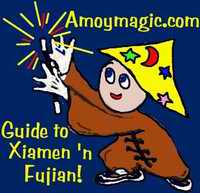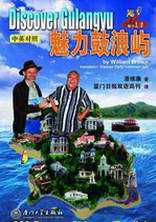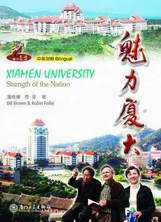![]() Click
to
Access
Click
to
Access
OUTSIDE China
![]() Click
to Access
Click
to Access
INSIDE
China
![]()
TRAVEL LINKS
![]() Xiamen
Xiamen
![]() Gulangyu
Gulangyu
![]() Jimei
Jimei
![]() Tong'an
Tong'an
![]() Jinmen
Jinmen
![]() Zhangzhou
Zhangzhou
![]() Quanzhou
Quanzhou
![]() Wuyi
Wuyi
![]() #1Fujian
Sites!
#1Fujian
Sites!
![]() Fujian
Foto Album
Fujian
Foto Album
![]() Books
on Fujian
Books
on Fujian
![]() Readers'Letters
Readers'Letters
![]() Ningde
Ningde
![]() Zhouning
Zhouning
![]() Longyan
Longyan
![]() Sanming
Sanming
![]() Putian
Putian
![]() Bridges
Bridges
![]() Travel
Info,
Travel
Info,
![]() Hakka
Roundhouses
Hakka
Roundhouses
![]() Travel
Agents
Travel
Agents
MISC. LINKS
![]() Amoy
People!
Amoy
People!
![]()
![]() Darwin
Driving
Darwin
Driving
![]()
![]() Amoy
Tigers
Amoy
Tigers
![]() Chinese
Inventions
Chinese
Inventions
![]() Tibet
in 80 Days!
Tibet
in 80 Days!![]()
![]() Dethroned!
Dethroned!
![]()
![]() Misc.Writings
Misc.Writings
![]() Latest
News
Latest
News
![]() Lord
of Opium
Lord
of Opium
![]() Back
to Main Page
Back
to Main Page
¡¡
![]() Order
Books
Order
Books![]() Xiamenguide
Forum
Xiamenguide
Forum 

Click Photos for Large Images (Photo
and text provided by Toni Mueller)
text provided by Toni Mueller)
Solomon's Courtyard Coffee House is the PLACE in Jimei where students, teachers and office workers can meet, share ideas, cultures and dreams in a warm, friendly environment.
A
unique multi- cultured meeting place, Solomon's was envisioned by the
blending of ideas of an American couple and their Chinese/Indonesian/Philippine
friends. The Courtyard is actually a four-story family home transformed
into a multi-functional business that yet retains a homey and inviting
atmosphere.
 Solomon's
menu has offerings not found anywhere else in Xiamen.
In addition to the usual coffees, teas and fruit juices served in other
coffee shops, Solomon's offers home-made baked goods created by the American
part of the team. Their recipes, handed down from generations of excellent
cooks, are not your standard Chinese non-sweet sweets but rather cookies,
cakes and breads that have become favorites with Chinese and foreigners
alike.
Solomon's
menu has offerings not found anywhere else in Xiamen.
In addition to the usual coffees, teas and fruit juices served in other
coffee shops, Solomon's offers home-made baked goods created by the American
part of the team. Their recipes, handed down from generations of excellent
cooks, are not your standard Chinese non-sweet sweets but rather cookies,
cakes and breads that have become favorites with Chinese and foreigners
alike.
English
Corner is Monday and Thursday nights  s
are given twice a month on all kinds of subjects, from your favorite
hobby or passion to improving your study habits and language skills. Business
lunches or dinner can be arranged by reservation. In the future, cooking
classes and live concerts, both western and Asian, will be added to the
events. Really, anything is possible at Solomon's Courtyard.
s
are given twice a month on all kinds of subjects, from your favorite
hobby or passion to improving your study habits and language skills. Business
lunches or dinner can be arranged by reservation. In the future, cooking
classes and live concerts, both western and Asian, will be added to the
events. Really, anything is possible at Solomon's Courtyard.  The
owners are flexible, fun-loving sand ready for cross-cultural adventures.
How about you? Normal hours are 4-10 Monday--Friday, 4--12 on Saturday,
closed on Sunday. Hours can be extended for reserved parties.
The
owners are flexible, fun-loving sand ready for cross-cultural adventures.
How about you? Normal hours are 4-10 Monday--Friday, 4--12 on Saturday,
closed on Sunday. Hours can be extended for reserved parties.
Add:
Fujian
Photo Album!
Travelogues by Scott Ballantyne! (Xiamen
ABB)
TRAVEL
LINKS  Favorite
Fujian Sites
Favorite
Fujian Sites
 Fujian
Foto Album
Fujian
Foto Album  Xiamen
Xiamen
 Gulangyu
Gulangyu
 Fujian
Guides
Fujian
Guides  Quanzhou
Quanzhou
 Zhangzhou
Zhangzhou
 Longyan
Longyan
 Wuyi
Mtn
Wuyi
Mtn
 Ningde
Ningde
 Putian
Putian
 Sanming
Sanming
 Zhouning
Zhouning
 Taimu
Mtn.
Taimu
Mtn.  Roundhouses
Roundhouses
 Bridges
Bridges
 Jiangxi
Jiangxi
 Guilin
Guilin
 Order
Books
Order
Books Readers'
Letters
Readers'
Letters
Last Updated: May 2007
Food has been China¡¯s avocation
ever since the first mythical hero, hunter/ fisherman F¨²x¨© (·üôË), invented
the kitchen and cooking. At least 3,019 years before Christ, Chinese in
X¨©¡¯¨¡n¡¯s B¨¤np¨ Village (Î÷°²°ëÆÂ) feasted on steamed chicken, carp
and elephant. And in 700 B.C., Chinese chefs wowed emperors with exotic
bitter melon soup, and lamb stewed with sugar cane.
The H¨¤n Dynasty (H¨¤nch¨¢o ºº³¯, 206 B.C.-220 A.D.) gave China flourmills,
noodles and tofu, and the T¨¢ngch¨¢o Dynasty (ÌƳ¯, 618-907 AD) saw the
advent of the wok and stir-frying. But it was an overabundance of food
during the Song Dynasty (S¨°ngch¨¢oËγ¯, 960-1279 AD) that fuelled the
great explosion of culinary innovation.
Even L¨£ow¨¤i influenced Chinese cuisine. The Manchus left behind the
winter hot pot now popular throughout China, but adapted in Xi¨¤m¨¦n to
feature seafood instead of mutton. And chili peppers introduced through
Portuguese Macao helped ignite S¨¬chu¨¡n¡¯s fiery fare.
A few millennia of culinary evolution has given Chinese cuisine a diversity
unimaginable for a simple American soul like myself, for whom variety
is a baked potato instead of mashed, or a side of canned peas ¨C never
such common but delectable Chinese delicacies as pea plant leaves or spinach
roots. But for all its infinite diversity, most Chinese food fits roughly
in five (some say ¡®eight¡¯) basic schools: B¨§ij¨©ng, S¨¬chu¨¡n, Sh¨¤ngh¨£i,
F¨²ji¨¤n and Gu¨£ngd¨ng (most popular abroad).
There are also hundreds of local styles. F¨²ji¨¤n cuisine is sweeter in
the south, saltier in the north, and heavy on sweet potato, rice flour
noodles, taro and peanuts in the west. (Warning: never eat taro with beef.
It¡¯s taro-bull).
B¨§ij¨©ng Cuisine ±±¾©²Ë Tofu and wheat, rather than rice, are staples
in B¨§ij¨©ng, where vendors sell steamed breads, buns stuffed with pork
and vegetables, and Chinese dumplings stuffed with garlic, cabbage, pork,
onions and MSG. One popular Northern dish is ¡°Beggar¡¯s Chicken¡± (Ji¨¤ohu¨¡
J¨©½Ð»¨¼¦). The hallowed recipe begins, ¡°First, steal a chicken.¡±
The famous ¡°Winter Hotpot¡± (Hu¨¯gu¨»ð¹ø) helps benumbed B¨§ij¨©ngers
survive frigid winter evenings, but they feast on B¨§ij¨©ng Duck year
round.
B¨§ij¨©ng Duck (B¨§ij¨©ng K¨£oy¨¡ ±±¾©¿¾Ñ¼) Diners adopt a live duck for
life by painting a number on its side. But it¡¯s a very short life. The
hapless duck is promptly murdered, stripped to its skivvies, and sewn
up tightly to hold the boiling water that ensures the roasted carcass
will be succulent and savory inside. The first course is the crisp skin,
basted with sweet Hoisin sauce (Mi¨¤nji¨¤ng Ãæ½´) and served with scallions
wrapped in small, thin pancakes. For the second course, the leavings are
cooked and served with bean sprouts or slices of bamboo. Nothing is wasted.
Even the bones are crushed and cooked with water, ginger and onion, and
then boiled with cabbage and sugar to make soup.
B¨§ij¨©ng Duck is served in many fine Xi¨¤m¨¦n restaurants. Try Marco
Polo¡¯s 2/F Chinese restaurant (it¡¯s Cantonese style B¨§ij¨©ng Duck,
but tasty!).
S¨¬chu¨¡n Cuisine (Chu¨¡nc¨¤i
´¨²Ë) S¨¬chu¨¡n¡¯s fiery fare is a perfect antidote to the sultry summers
of this remote but most populous province. Chefs combine ginger, red peppers,
onions and soy sauce to create dishes that will ream a Mexican cowpoke¡¯s
sinuses. But not all S¨¬chu¨¡n food is hot; they also serve up sweet,
sour, salty, fragrant, and bitter -- in every combination possible and
some that are not possible but come off anyway.
Xi¨¤m¨¦n¡¯s best Chu¨¡nc¨¤i is not in restaurants but the home of Xi¨¤m¨¦n
University¡¯s famous art professor, T¨¢ng Sh¨¤oy¨²n (ÌÆÉÜÔÆ) He and his
wife and daughters whip up the tastiest (and fieriest) food imaginable.
But if you can¡¯t wangle an invite to their home, you can still get decent
Chu¨¡nc¨¤i in most major hotel restaurants, as well as many hole-in-the-walls.
Sh¨¤ngh¨£i Cuisine ÉϺ£²Ë
In coastal Sh¨¤ngh¨£i, crowds throng about vendors hawking rolls stuffed
with pork and beef, and gourmands from all over Asia fly in to sample
Sh¨¤ngh¨£i hairy crabs, four-gill carp, and meats spiced with Sh¨¤ox¨©ng
wine (Sh¨¤oji¨³ÉܾÆ), often arranged in beautiful floral designs on delicate
china. But where¡¯s the beef? With grazing land at a premium in this populous
nation, beef is still rare, in Sh¨¤ngh¨£i and elsewhere. Besides, peasants
see it as poor form to reward an ox¡¯s faithful service by eating him.
So the pig remains the perennial king with Chinese chefs, who use everything
from offal to oink.
You have eaten Shanghai Cuisine. The foreigners¡¯ perennial favorite,
Sweet ¡¯n Sour Pork (T¨¢ngc¨´ R¨°u ÌÇ´×Èâ) is not Cantonese, as some think,
but Shanghai.
Cantonese Cuisine (Gu¨£ngd¨ng C¨¤i ¹ã¶«²Ë)
Question. What¡¯s the difference between Cantonese zoos and restaurants?
Answer: not much¡
The Venetian vagabond Marco
Polo wrote of his Chinese hosts, ¡°They eat all sorts of flesh, including
that of dogs and other brute beasts and animals of every kind which Christians
would not touch for anything in the world.¡±
Evidently, L¨£on¨¨i still don¡¯t touch them. A Chinese restaurateur complained
of meat and potato Canadians, ¡°They don¡¯t want real Cantonese cuisine.
It¡¯s always sweet ¡®n sour pork, lemon chicken, beef and green peppers,
fried rice, spring rolls, and Chinese fortune cookies¡± (which originated
not in China but California).
While L¨£ow¨¤i may prefer frozen fish sticks over fricasseed fish lips,
Chinese still devour anything that won¡¯t eat them first. If they can¡¯t
eat it, they call it medicine and ingest it anyway. But Cantonese take
the tofu. Even other Chinese say of them, ¡°They eat anything that flies
but planes, and anything with four legs but the table and chairs.¡±
Cantonese menus include live monkey brains, sparrows, wild ducks, snails,
snakes, eels, frogs, turtles, deer penis soup, and canine cuisine. (In
1990, an MBA student asked me to invest $10,000 in his scheme to export
canned dog to America. I asked him if he¡¯d ever heard of market surveys).
Cantonese restaurants abound in Xi¨¤m¨¦n, but some of the more popular
are in B¨£il¨´ Zh¨u (along the lake) and on North H¨²b¨©n L¨´, past the
Sports Arena. They are always packed to the gills¡ªand fins and flippers
as well.
Xi¨¤m¨¦n Cuisine (Xi¨¤m¨¦n
C¨¤i ÏÃÃŲË) Canton, though renowned its seafood, comes nowhere close
to Xi¨¤m¨¦n's offerings. Off magical Amoy¡¯s contorted coastline, if it
swims, crawls, wiggles, or squirms, some enterprising soul will wrest
it from the sea and serve it up with M¨«nn¨¢n rice noodles, taro dishes
and five-spice meat rolls, salty and peppery roast chicken, abalone, duck
webs with glutinous rice, scented pork kidney, stuffed cucumbers, braised
frogs, shark, crab, mussels and oysters (stir-fried with eggs), sea urchins,
mineral-rich seaweed, and sea cucumber. And of course there¡¯s Xi¨¤m¨¦n¡¯s
#1 specialty ¨C boiled seaworm embedded in cold jellyfish (T¨³s¨³nd¨°ngÍÁËñ¶³).
For authentic Xi¨¤m¨¦n cuisine (a cross between Cantonese and F¨²zh¨u
styles, with a little T¨¢iw¨¡n thrown in), try the Xi¨¤m¨¦n Guesthouse,
near Zh¨ngsh¨¡n Park, or the Overseas Chinese Hotel, near the Cultural
Palace.
But some of it is still too froggy for my taste¡
![]()
DAILY
LINKS
![]() FAQs
Questions?
FAQs
Questions?
![]() Real
Estate
Real
Estate
![]() Shopping
Shopping
![]() Maps
Maps
![]() Trains
Trains
![]() Busses
Busses
![]() Hotels
Hotels
![]() News
(CT)
News
(CT)
![]() Medical
& Dental
Medical
& Dental
![]() YMCA
Volunteer!
YMCA
Volunteer!
![]()
![]() XICF
Fellowship
XICF
Fellowship
![]() Churches
Churches
![]()
![]() Expat
Groups
Expat
Groups
![]() Maids
Maids
![]() Phone
#s
Phone
#s
EDUCATION
![]() Xiamen
University
Xiamen
University
![]() XIS(Int'l
School)
XIS(Int'l
School)
![]() Study
Mandarin
Study
Mandarin
![]() CSP(China
Studies)
CSP(China
Studies)
![]() Library
Library
![]() Museums
Museums
![]() History
History
DINING
![]() Restaurants
Restaurants
![]() Asian
Asian
![]() Veggie
Veggie
![]() Junk
Food
Junk
Food
![]() Chinese
Chinese
![]() Italian
Italian
![]() International
International![]()
![]() Visas
4 aliens
Visas
4 aliens
RECREATION
![]() Massage!
Massage!
![]() Beaches
Beaches
![]() Fly
Kites
Fly
Kites
![]() Sports
Sports
![]() Boardwalk
Boardwalk
![]() Parks
Parks
![]() Pets
Pets
![]() Birdwatching
Birdwatching
![]() Kung
Fu
Kung
Fu
![]() Hiking
Hiking
![]() Music
Events
Music
Events
![]() Festival&Culture
Festival&Culture
![]() Humor&
Humor&![]() Fun
Fotos
Fun
Fotos![]()
BUSINESS
![]() Doing
Business
Doing
Business
![]() Jobs!(teach/work)
Jobs!(teach/work)
![]() Hire
Workers
Hire
Workers
![]() Foreign
Companies
Foreign
Companies
![]() CIFIT
(Trade Fair)
CIFIT
(Trade Fair)
![]() MTS(Translation)
MTS(Translation)
![]()
Back to Top





